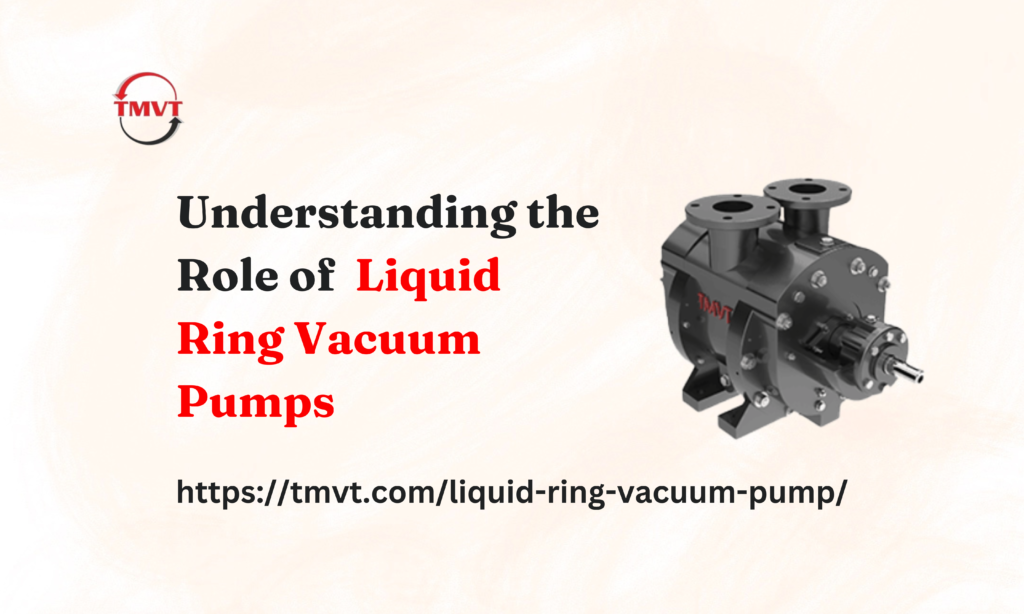When it comes to efficient and robust vacuum generation, a Liquid Ring Vacuum Pump stands out for its simplicity and durability. These pumps are widely used across industries like chemical processing, pharmaceuticals, power generation, and paper manufacturing. But one of the most critical—yet often overlooked—components of a liquid ring vacuum pump system is the service liquid. Also known as the sealing liquid or operating fluid, this element plays a vital role in the pump’s operation, efficiency, and longevity.
In this blog post, we’ll explore the function of the service liquid in detail—what it is, how it works, its impact on pump performance, and the key considerations in selecting and maintaining it.
What is a Liquid Ring Vacuum Pump?
Before diving into the role of the service liquid, it’s important to understand the basics of how a Liquid Ring Vacuum Pump functions.
A liquid ring vacuum pump is a rotating positive displacement pump that uses a liquid—usually water as a sealant. It consists of a cylindrical casing and an impeller with blades that spin inside the casing. The impeller is mounted eccentrically, which means its center is offset from the center of the casing.
As the impeller rotates, the service liquid is thrown outward by centrifugal force, forming a liquid ring inside the casing. The space between the impeller blades becomes compressed and expanded due to this offset design, creating chambers of varying volume. This motion traps gas from the inlet port and compresses it before expelling it through the discharge port. Throughout this process, the service liquid acts as both a sealant and a medium for heat dissipation.
Functions of Service Liquid in a Liquid Ring Vacuum Pump
Let’s break down the core roles that service liquid performs in a Liquid Ring Vacuum Pump:
1. Sealing the Compression Chambers
The primary role of service liquid is to create a seal between the impeller blades and the casing. Without this seal, the pump would not be able to trap and compress gas effectively. The liquid fills the voids between the impeller vanes, forming tight pockets that isolate gas volumes and prevent backflow or leakage.
2. Cooling the System
As gases are compressed inside the pump, heat is naturally generated. The service liquid absorbs a significant portion of this heat, preventing thermal buildup that could damage pump components or reduce efficiency. This cooling effect is particularly important in continuous or heavy-duty industrial applications.
3. Absorbing and Handling Contaminants
In many applications, especially in chemical processing or food industries, the vacuum pump might ingest vapors, liquids, or particulates. The service liquid can help absorb, trap, or neutralize some of these contaminants, preventing damage to the pump’s internals. In some cases, specific service liquids are chosen for their compatibility with process media.
4. Maintaining Vacuum Stability
Service liquid plays a pivotal role in stabilizing the vacuum level within the system. Variations in its temperature, flow rate, or composition can lead to inconsistent vacuum performance. Maintaining the correct properties of the service liquid ensures the pump operates smoothly and consistently.
Common Types of Service Liquids
While water is the most commonly used service liquid, it’s not the only option. Depending on the application and compatibility with process gases, other fluids may be preferred:
- Fresh Water – Ideal for general-purpose applications.
- Closed-loop Water – Recycled and cooled water used in systems requiring water conservation.
- Solvents or Process Liquids – Used in applications involving reactive gases where water might cause a reaction.
- Oils or Special Fluids – Selected when high vapor pressure or chemical resistance is needed.
Each type has its benefits and trade-offs in terms of cost, maintenance, heat absorption, and chemical resistance.
Open-Loop vs. Closed-Loop Liquid Ring Systems
The service liquid can be managed in one of two ways:
1. Open-Loop System
In an open-loop system, fresh service liquid is continuously supplied to the pump and discharged after use. This method ensures fresh cooling and sealing liquid but may be inefficient in water usage and higher operating costs.
2. Closed-Loop System
In a closed-loop or recirculating system, the service liquid is cooled and reused. This approach conserves water and reduces costs, though it requires additional equipment like heat exchangers and filters to maintain liquid quality.
Key Properties of an Ideal Service Liquid
To function optimally, the service liquid in a Liquid Ring Vacuum Pump should meet several criteria:
- Low Vapor Pressure: Reduces the risk of cavitation and loss of sealing capability.
- Good Thermal Conductivity: Efficiently absorbs and dissipates heat.
- Chemical Compatibility: Non-reactive with process gases or pump materials.
- Low Viscosity: Ensures easy flow and rapid sealing action.
- Non-Toxic and Non-Volatile: Especially important in food and pharma industries.
Selecting a fluid with these characteristics ensures a longer pump lifespan and efficient operation.
Effects of Temperature and Vapor Pressure
One of the most critical factors affecting the performance of the service liquid is its vapor pressure, which is highly temperature-dependent. If the temperature of the service liquid increases beyond a certain threshold, its vapor pressure may approach the operating vacuum pressure, leading to vaporization within the pump chamber.
This can cause cavitation, a destructive phenomenon that leads to pitting, noise, vibration, and premature pump failure. To prevent this, it is essential to monitor and regulate the temperature of the service liquid using coolers or heat exchangers.
Monitoring and Maintaining the Service Liquid
Regular maintenance of the service liquid is essential to ensure the long-term reliability and performance of your Liquid Ring Vacuum Pump. Here’s what you need to keep in check:
- Temperature: Keep the liquid within the recommended temperature range using external coolers.
- Contamination: Replace or treat the service liquid if it becomes dirty, acidic, or chemically reactive.
- Flow Rate: Ensure proper flow to maintain sealing and cooling efficiency.
- Level Monitoring: Maintain the correct fluid level in the reservoir or pump chamber.
Service Liquid in Different Industrial Applications
Different industries have varying requirements for service liquids:
- Pharmaceuticals & Food Processing: Often require non-toxic, closed-loop systems with strict contamination controls.
- Chemical Plants: May need chemically resistant liquids to handle corrosive gases.
- Paper & Pulp Industry: Prefer open-loop systems for simplicity and easy integration.
- Power Plants: Use large vacuum systems requiring massive liquid circulation—usually in closed-loop form for energy and water efficiency.
At TMVT, we offer specialized guidance in selecting the right pump and service liquid combination tailored to your industry and application needs.
Impact on Energy Efficiency
The quality and temperature of the service liquid directly impact the energy efficiency of your pump system. A well-maintained liquid ring system with optimal service liquid will:
- Reduce power consumption
- Lower operational wear and tear
- Minimize thermal losses
- Extend service intervals and overall pump life
In energy-intensive operations, this translates to significant cost savings over time.
Conclusion: Service Liquid—The Unsung Hero of Liquid Ring Vacuum Pumps
While the mechanics of a Liquid Ring Vacuum Pump might steal the spotlight, the service liquid is the real MVP behind the scenes. From sealing and cooling to maintaining consistent vacuum and extending the pump’s life, its contribution cannot be overstated.
Neglecting the service liquid can lead to reduced efficiency, cavitation, and even system failure. Conversely, by selecting and maintaining the right service liquid, you ensure optimal performance, energy efficiency, and a longer operational life for your vacuum system.











































